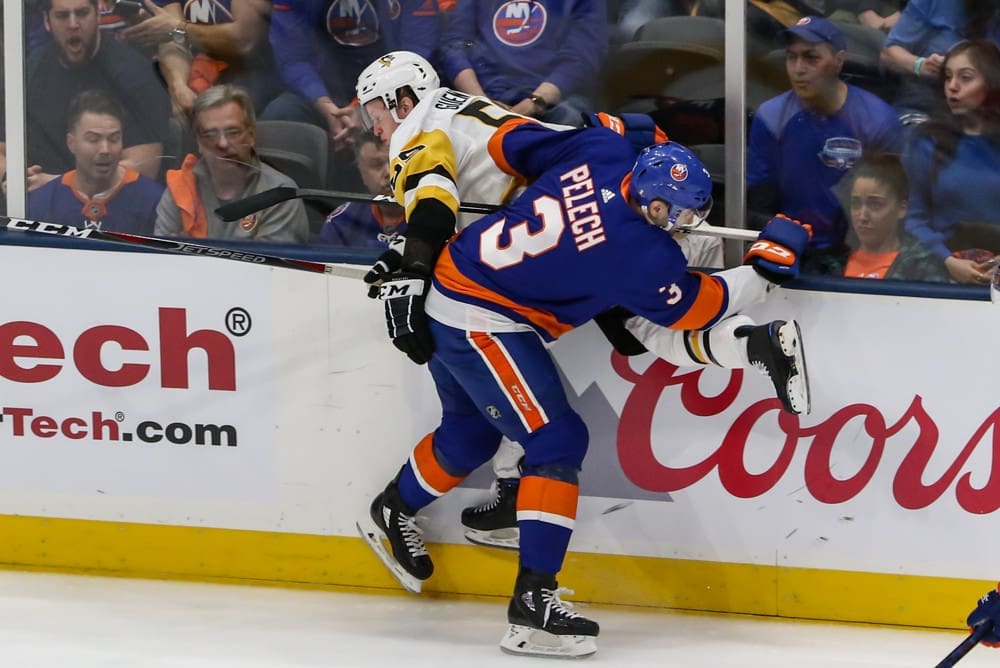Penguins
PHN Blog: Officiating, the NHL & the Penguins Future

There are nights when watching hockey is like attending a Mozart symphony. It’s bigger than life, immersive, and the game can rapture even the most casual fans. The Pittsburgh Penguins are capable of playing that kind of hockey still.
Then there are other nights, watching hockey is like watching a muddy tractor pull from the Fayette County Fair, but you can’t find the remote. Sure, it’s interesting for a moment, but that’s all there is. The Pittsburgh Penguins are being pushed into this type of muddy hockey.
The NHL officials, and their overseers at the NHL league office, have come under increased scrutiny during the 2021 NHL playoffs, and for good reasons.
If you forgot the last 20 years, you would swear this was again 2001, and the New Jersey Devils were the champs, that owners were trying to limit salaries by depressing offense to unwatchable levels, and star players were clowned by extra-legal physicality and obstruction.
Lest you think this is a writer’s opinion, former NHL head of officiating and the finest hair ever to wear the orange band, Kerry Fraser did some uncharacteristic poking via Twitter, too.
“As routing of NY Islanders was in progress tonight, referees with feel for the temp,” his tweet began. “(They) should move into damage control mode. Two situations could have been averted if only initial crosscheck infractions had been called. One might result in suspension to Barzal?”
With some irony, it was the New York Islanders star player Mathew Barzal who tried to do some clowning on Monday night. Instead, he should be suspended for Game 6 after a direct cross-check to Jan Rutta’s face.
For everyone (but Islanders fans) who watched the New York Islanders Round One and Round Two series, the obstruction was at times unbearable (for everyone but Islanders fans).
A team should not be able to win a game with 20 shots on goal unless that team is the 1992 Pittsburgh Penguins who would pass up a dozen shots but also bury five of them, then make a side-show of forcing their goalie to make acrobatic saves before an empty netter and 6-4 win.
That was fun to watch.
This current version is not (except for Islanders fans).
Except for Montreal Canadiens fans.
The game was inching toward bigger bodies since the 2017 Pittsburgh Penguins lifted the Stanley Cup with battered and bruised bodies. That team looked like the winner of the demolition derby.
Then Washington’s beefy roster with elite talent and St. Louis’s skill and grinders lifted the next two Stanley Cups before the complete package Tampa Bay Lighting won the Bubble Cup.
While Tampa Bay appears ready to win back-to-back Cups and the first time, they’re also doing it with a nearly $100 million payroll. David Savard on the blue line was not an insignificant get with the extra money they had from the LTIR loophole.
First–the NHL MUST CLOSE THAT LOOPHOLE.
Second–the NHL controls the type of game that will be played. Could you imagine a Stanley Cup Final with the Montreal Canadiens and New York Islanders? As each team retreated to clog the neutral zone and barricade themselves in the defensive slot, neither team would get more than 25 shots.
Oh boy, exciting!
In 1938, college basketball had what would be a full-blown scandal in today’s media world. Purdue player Pat Malaska (I had to Google the player’s name) sat on a lead. Literally. Opponents fell back into defense but wouldn’t venture out of formation to cover him.
So, he sat on the ball at mid-court and ate an ice cream sandwich.
A Stanley Cup Final with two teams that clog the zone with four players at the expense of offensive push would have been slightly less exciting.
OK, much less exciting.
The 2016 Pittsburgh Penguins were the zenith of the move towards mobile players. They earned power plays. And lots of them in the playoffs. Officials, and by proxy the league, reinforced the Penguins tack towards extreme speed.
I loved this tweet by Jesse Marshall. I generally like a more traditional, rougher Canadian game than most of my colleagues. However, I still find myself in total agreement, even as Twitter came for Jesse after his tweet.
Hockey is at its most talented point ever. Players are the fastest they've ever been. Their pucks skills are better than they've ever been. We see forwards do things with the puck we couldn't dream of as kids. The league, in response to that, as set the rulebook on fire.
— Jesse Marshall (@jmarshfof) June 21, 2021
Connor McDavid does things on his edges that would break the ankles of mere mortals. I doubt some of his moves and acceleration would even be possible with older skates. He works hard on that ability, and young players are following suit.
Hockey is pushing towards an immensely talented game with a good streak of physicality from the bottom up. I occasionally peek at my 14-year-old nephew’s games. (Maybe he’s 15 now? I’d stay off the roads when he’s 16).
Talented players dominate, but there’s ample room for a few players who know how to muck and grind. A few good hits get everyone’s temperature up, and a team can assert itself. It’s quite entertaining, but there isn’t the clutching and grabbing at the youth levels.
On his teams and others that I see at the UPMC Lemieux Complex, skill is flourishing again after a decade of worries that the game was becoming over-coached.
The game at all levels is moving one way, while at the top, it’s being dragged the other way.
I’ve written over 800 words, and I haven’t even addressed the future of the Pittsburgh Penguins. The slog back towards big bodies and less skill has clear implications.
The Penguins have some mid-20s players in their top-nine who will be adversely affected. Bryan Rust is the exclusion because he can play any game. What a development story he has been.
We’ll get into the deeper specifics over the next three weeks, but I sense your attention span waning. The movement is going to harm Jake Guentzel, maybe Jared McCann. Jason Zucker isn’t a big body either.
The Penguins centers, Sidney Crosby, Evgeni Malkin, Jeff Carter, and even Teddy Blueger, are well situated to deal with the game. The wingers are not.
Just where the scale balances between keeping their advantages and adding the ability to compete at the Fayette County fair will be defining question of the next four months.


